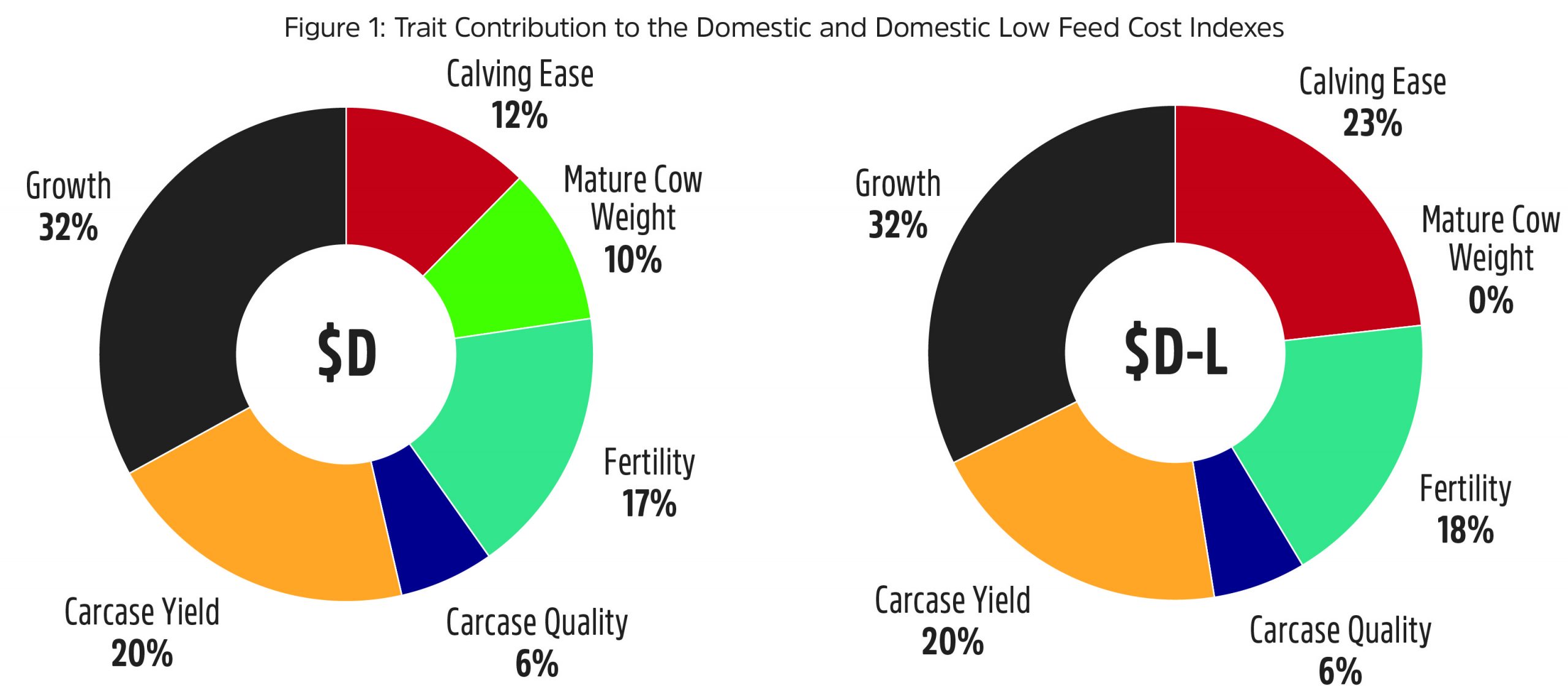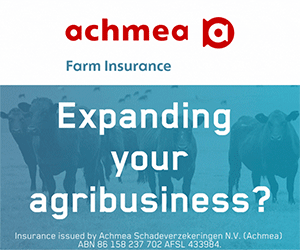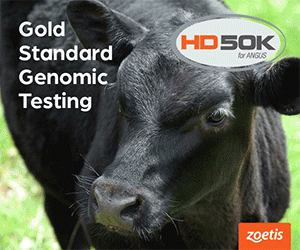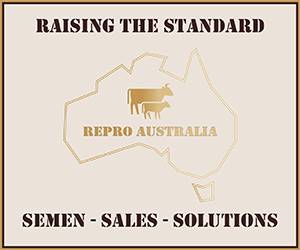
The Domestic Index ($D) and Domestic Low Feed Cost Index ($D-L) estimate the genetic differences between animals in net profitability per cow joined in a commercial self replacing herd targeting the domestic supermarket trade.
Daughters are retained for breeding and therefore female traits are of importance.
Steers are either finished using pasture, pasture supplemented by grain or grain (eg. 50 – 70 days) with steers assumed to be slaughtered at 510 kg live weight (280 kg carcase weight with 12 mm P8 fat depth) at 16 months of age.
Emphasis has been placed on eating quality and tenderness to favour animals that are suited to MSA requirements.
The $D & $D-L indexes are similar, with the difference being the production system on which they are modelled. The $D index caters for production systems where pasture is fully utilised for the majority of the year, while the $D-L index caters for systems where feed is surplus to requirements for the majority of the year, or the cost of supplying additional feed when animal feed requirements increase, via increased pasture production and/or supplementary feeding, is low. The $D index aims to maintain mature cow weight while the $D-L Index does not limit an increase in mature cow weight.
Figure 1 shows the traits that are considered in the $D & $D-L indexes, and how much they contribute to the overall balance of each selection index. The larger the segment, the greater the impact on the selection index.
In both the $D & $D-L indexes, there is a focus on improving growth, carcase, calving ease and fertility traits. The main difference is the increased emphasis on mature cow weight in the $D index, whereas this emphasis is given to calving ease and fertility in the $D-L index.

Figures 2 & 3 show the selection advantage if animals are selected using the $D & $D-L indexes.
The selection advantage is calculated by ranking well used sires within the Angus breed on the respective selection index, and comparing the average EBVs of the sires in the highest 10% with the average EBVs of all sires from which they were selected. For example, the sires ranked in the highest 10% based on the $D index had 14 kg higher 400 Day Weight EBVs and 1.0 kg lower Birth Weight EBVs than the average EBVs of the sires from which they were selected.
The selection advantage is indicative of the long term direction and relativity of response that will occur in individual traits if selection is based on each respective selection index. The actual response that is observed will vary depending on the features of the individual breeding program.
The main difference in the selection advantage between the $D & $D-L indexes is in the growth traits and mature cow weight. Animals ranking highly on the $D-L index have higher growth EBVs relative to the $D index, meaning selection on the $D-L index will result in a higher increase in growth to 200, 400 and 600 days of age than selection on the $D index, however this is also associated with higher mature cow weight EBVs, meaning an increase in mature weight will also be observed. By comparison, the selection advantage of the $D index for mature cow weight is close to 0, meaning that selection on this index will maintain mature cow weight, while still increasing growth to 200, 400 & 600 days of age.








